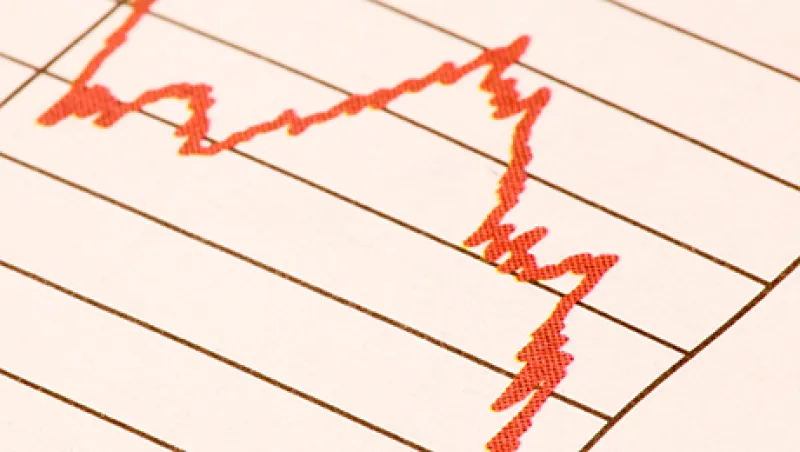Registered investment advisers may be wondering how to approach high-yield bonds for clients after the Third Avenue Focused Credit Fund meltdown last month and subsequent plunge in junk bond prices. The answer: Very carefully.
With the energy sector in disarray because of plunging oil prices, junk bond yields may have further room to rise. And according to analysts and money managers, decent fundamentals in other sectors and yields at four-year highs mean that RIA clients might find some attractive investment opportunities coming down the pike — though not immediately.
“Things can get worse before they get better,” says Collin Martin, director of fixed income at Charles Schwab’s Center for Financial Research in New York. “We think there will be bouts of volatility in 2016. At some point, there will be buying opportunities, but not just yet.”
The yield of the Barclays Capital U.S. Corporate High-Yield Bond index reached a four-year high last month and stood at 8.76 percent on December 30. Junk bonds’ spread over Treasuries rose to 670 basis points on December 29, up from 485 basis points at the start of 2015.
The key factor hammering high-yield last year was the ongoing slump in the price of oil and other commodities. The Bloomberg Commodity index hit a 16-year low in December. The energy industry accounts for 14.5 percent of high-yield bonds outstanding, according to Barclays. “The commodity and energy sectors fared really poorly over the last year,” says Sumit Desai, senior fixed-income analyst at Morningstar in Chicago. “If those sectors remain volatile, high-yield as a whole will probably be volatile too.”
Bonds outside the commodity sector suffered as well. “Some of that was a spillover from energy,” Martin says. Slowing earnings growth — and, in some cases, negative earnings — also weighed on high-yield. And then there were liquidity concerns in the wake of the Third Avenue debacle.
The global speculative-grade default rate rose to 2.9 percent in November, from 2.1 percent in December 2014, according to Moody’s Investors Service. The agency forecasts that the rate will reach 3.7 percent in November 2016. That’s still below the 4.2 percent average since 1983, however. Much of that anticipated increase is already priced into the market, say analysts.
The fundamentals for the high-yield market are strong enough to make Timothy Compan, a fixed-income portfolio manager at PNC Capital Advisors in Cleveland, “cautiously optimistic.” He and his colleagues expect U.S. economic growth of 2 to 2.5 percent this year. “That’s not great, but it’s good for credit,” Compan says. He’s bullish on banking and health care. The banks benefit from “holding more capital than ever and from being more regulated than ever,” Compan says. Meanwhile, retail and hotels are also benefiting from low oil prices, Desai adds.
Yields at four-year highs make valuations attractive, analysts say. But Desai points out that return is not risk-free. Achieving that return would require a lot of risk-diving in energy bonds. “I would temper expectations,” Desai says. “You can’t find a safe 9 percent bond yield.”
Analysts don’t expect Federal Reserve interest rates hikes to have a major effect on junk bonds, because the increases are expected to be slow and shallow. The Fed began the process last month, raising the federal funds rate target by 25 basis points, and many economists expect another three hikes of that magnitude this year.
“The Fed may have some impact on the margin, but corporate funding is driving the market,” Desai says. U.S. high-yield bond issuance totaled $256 billion in the first 11 months of last year, according to Thomson Reuters data. “To the extent that the Fed affects the market, 25 basis points in the context of 9 percent yields doesn’t necessarily move the needle nearly as much as the energy sector,” Desai says. Indeed, a case can be made that if the Fed is tightening in response to economic strength, that’s positive for junk bonds.
RIAs should make sure that clients contemplating high-yield bonds realize that such securities are a far cry from safer areas of the bond market. “Over time, the high-yield asset class is much more closely correlated to equities than bonds,” Desai says. Because of that, investors who invest in high-yield bonds thinking they are gaining diversity and safety in relation to their stock holdings are mistaken, he continues. “Look at [high-yield bonds] more as a complement to long-term equity positions and at their income-producing potential for the long term.”
Get more on fixed income and on registered investment advisers.







